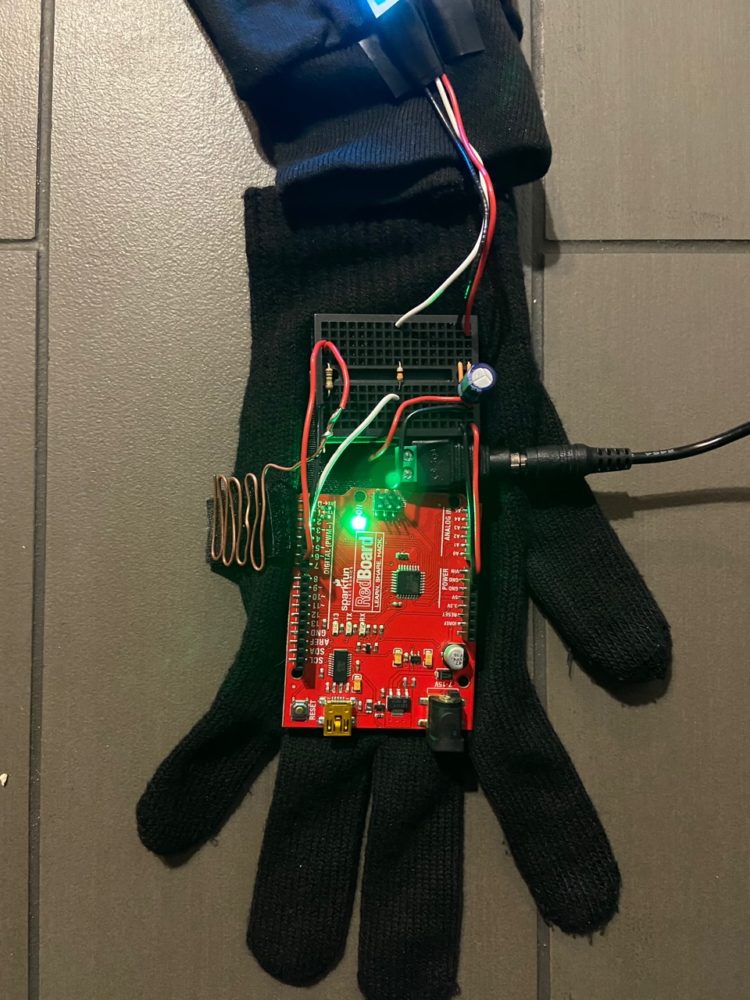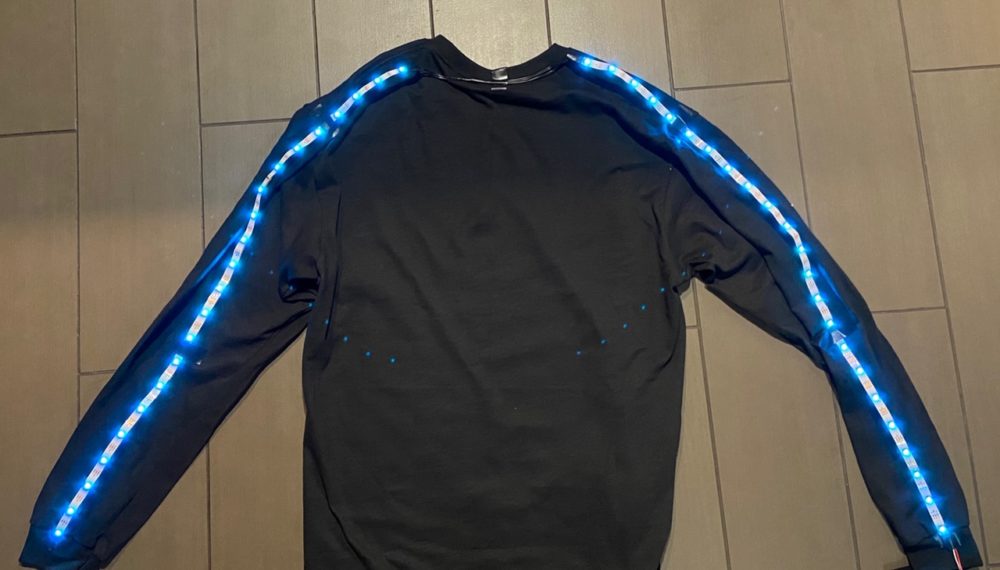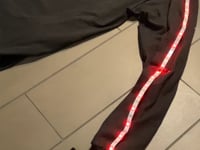For my final project, I initially intended to create interactive apparel encouraging in-person interactions. Given the recent pandemic, I do not believe this project will have the positive impact I initially desired. With that in mind, I have decided to pivot, creating apparel that discourages contact (for the time being). The principles are the same as initially intended with Dopamine, except now, capacitive touch sensors will be utilized to detect if contact is made, then activate a warning light (blinking red addressable LEDs). This will serve as reminded to refrain from handshakes, high-fives, and so on. When contact is not made, the shirt will utilize calming colors like green and blue to indicate that all guidelines are being met. With this in mind it no longer makes sense to entitle this project as Dopamine. Therefore, I will now be calling this project COVID Apparel.
I have finished the base elements of the piece, starting with capacitive touch implementation. Capacitive touch works by detecting the impact human touch (capacitance) has on an RC circuit. Utilizing a large resistor (in my case 1 MegaOhm) and exposed conductive materal, it is possible to determine when contact is made with human skin. I additionally used the CapacitiveSensor library developed by Paul Badger to simplify my setup. Below is an image of my sensor, made from copper wire. It attaches to a glove such that contact with the hand can be detected.

Next, I worked on coding the addressable LEDs. This is made simple with the neopixel library. Each LED can now be controlled individually with one function (strip.setPixelColor(..)). To cover both sleeves of a long sleeve t-shirt, I needed 46 LEDs (23 for each arm). Next, I soldered color coded wire to connect to my Arduino. I then cut the strip in half and soldered a semicircle of black wire to each side. This wire is meant to go around my neck. Lastly, electrical tape is used to insulate all new solder connections. Below is an image of the addresable LEDs.

When it came to put it all together, I utilized conditionals in my Arduino code to differentiate the lighting when contact is detected and not detected. This effect is demonstrated in the video thumbnail.
Before bringing this project to a close, I would like to polish the look . Perhaps I could add some thin fabric over the LEDs to help diffuse the light. Any other suggestions would be greatly appreciated.



2 Comments. Leave new
Thanks Kensue!
This is a great idea! I thought that it was interesting how the arduino was on the glove so it was accessible while the entire apparel was on! Excited to see how it looks when worn.